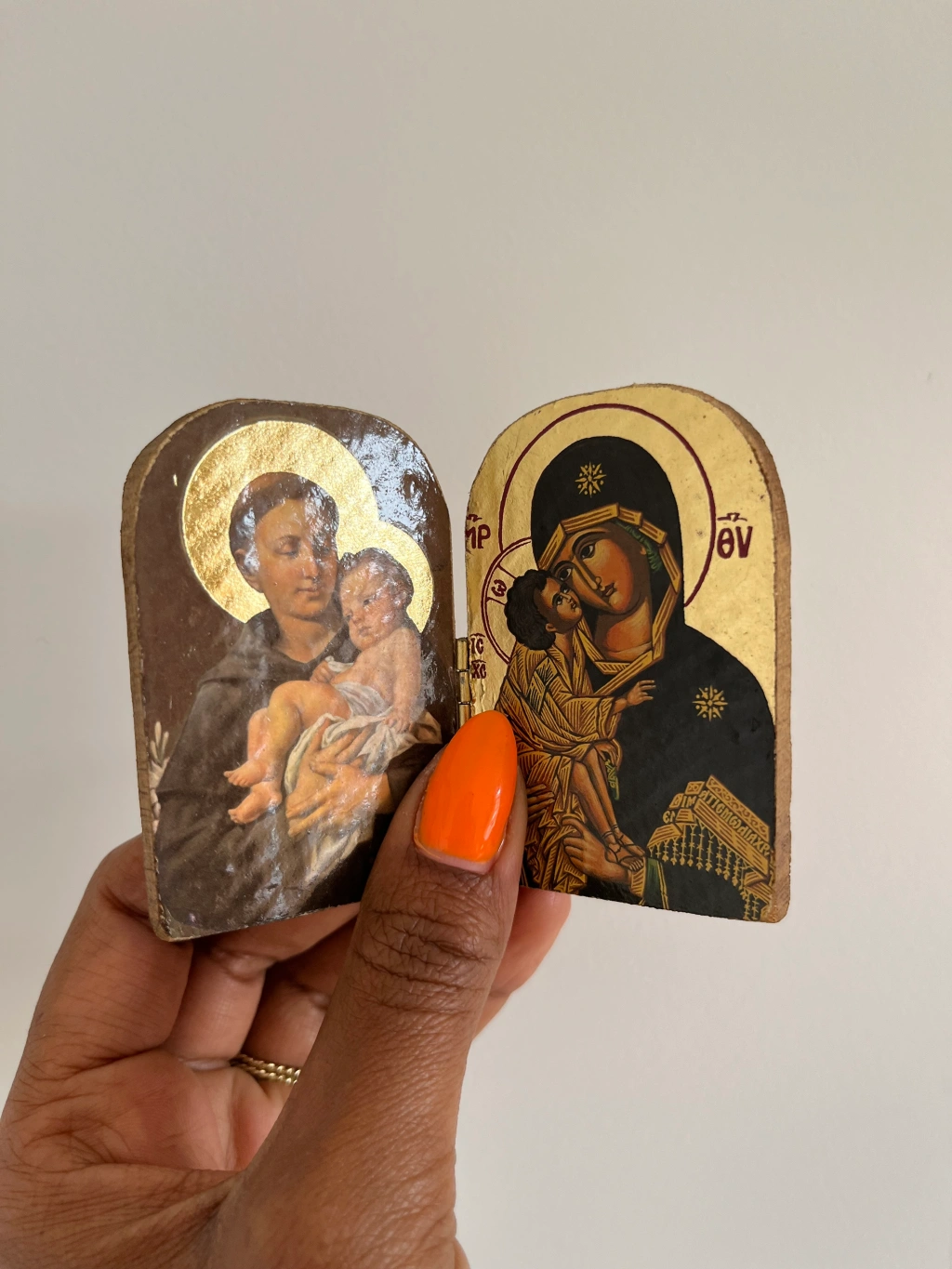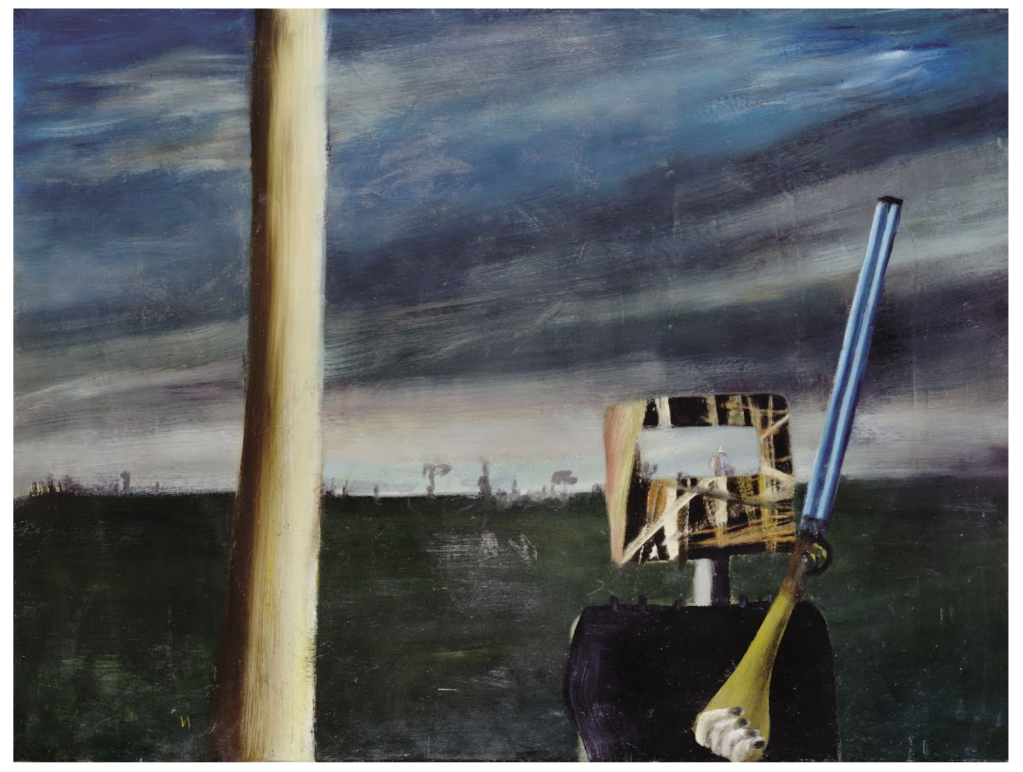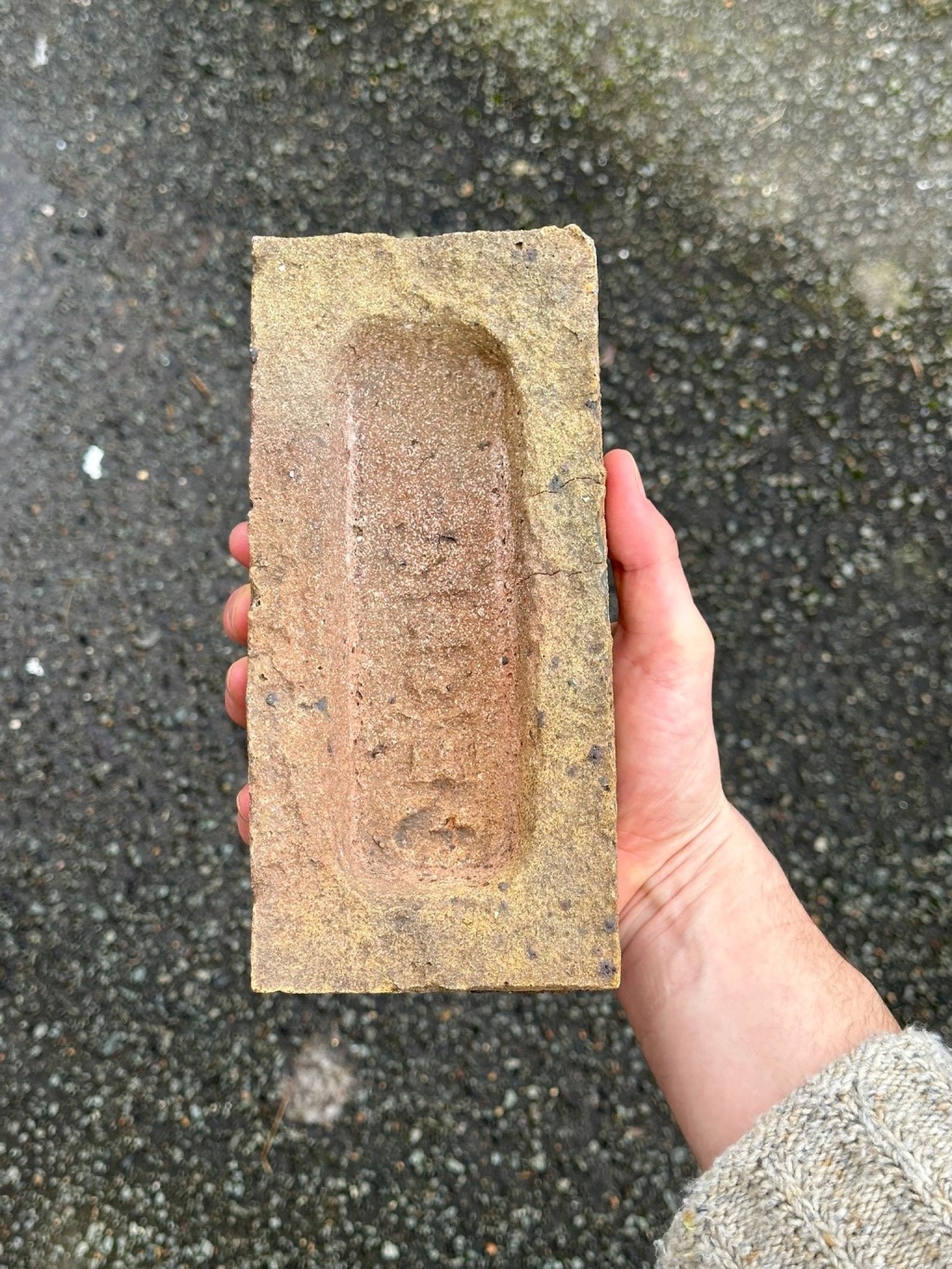
Ben Ashton, artist, on the heel of his hand
GB Tell me why you chose this.
BA It’s for practical reasons really, because it allows me to do what I do. It’s the most efficient way of removing paint from a surface once you’ve applied it. What a lot of people don’t know about oil painting, is that it’s more about taking paint off the surface a lot of the time, than it is about putting the paint on it. You apply it with a brush and the way you put it on is quite messy and then it’s how you sculpt it and shape it with your palm or fingers that will actually create the nuance in the figurative work. Artists have used the heel of the hand for centuries and the hand is also the first thing you use for painting as a child so it’s funny that at such a naïve level and such a high level it’s still the most practical thing to use.
GB Your paintings are so detailed. I can hardly believe any of it is done with a hand.
BA If you had them under a microscope, you’d see fingerprints and palm prints all over them. I work in thin layers of glaze, so you smooth out the glaze, otherwise you’d see brush strokes everywhere. The palm of the hand is good to take the brush strokes away and so practical to use on skin because it’s skin that you’re using, so it’s perfect. I learnt my oil painting technique from a craftsman’s handbook written in the 1500s by Cennini. It takes you through the process of making the board you’re going to work on, priming it, all the way through to putting ground on and then glazing. I learnt all this from these old scriptures. No one physically taught me. I just read it all in the library. It was a very old school way of doing things, the idea of starting out as an apprentice and working through the process, never really trying to run before you can walk, taking the process gradually and slowly. It’s only recently that I feel like I’ve developed my own personal way of doing things.
GB What do you think about art schools? You’re so highly skilled yet you taught yourself.
BA Art school didn’t really enable me to do what I do except that it gave me space and time and those are really important, leaving someone to their own devices. Being around other creatives doing completely different things to you is also important. I was told endlessly throughout my time at art school (four years at Newcastle and another two years at Slade), to stop painting and concentrate on performance art. I think the more you’re told not to do something, the more you want to do it, to prove them wrong. So the rebellious side of me continued painting. There are always fashions and fads – and figurative art in the way I do it is not particularly in fashion. We had a lot of tutors who were abstract painters. But if you just keep doing what you do, you can probably come into fashion again, so I’m happy to carry on doing what I do until that happens.
GB Do you think beauty is still out of fashion in art?
BA There was a lot of talk at art school about beauty being a dirty word, but then your idea of beauty is very personal and subjective. It’s a tough one to even talk about because one person’s beauty is another’s disgusting ugliness.
GB You clearly love 16th century painting. Do you think those artists were trying to create beauty or just perfectly representational pictures?
BA That’s a tricky question. They were certainly trying to impress people. They wanted to show their skill at what they were doing. In my work I appropriate poses that echo throughout history. Hopefully if you see my paintings you’ll feel like you’ve seen them somewhere before but never be quite sure where because they’re an amalgamation of things. I want a sense of timelessness in my work, so people can look at it in the same way 100 years after I’m dead. I want it to resonate through the ages. A lot of 16th century paintings were created in the first place because they were commissioned by the church but I don’t think that that context is important. They were interested in the way light hit objects, in the compositional lines in a 2D object.
GB Do you associate beauty with that kind of virtuosity?
BA Yes. But for me beauty is more powerful. I’m looking to be smacked in the face by something. I find the power of art beautiful.
GB Tell me about the photograph of your hand and the painting in the background.
BA That’s my wife. She’s wearing a mask by a woman called Magnhild Kennedy. It’s one of a collection that I’m creating at the moment. They’re absolutely massive. They’re eight by four foot paintings. They’re life size figures wearing these amazing masks. Those allow you to remove your own identity. They’re of myself, my wife and my child in this series.
GB How old is your child?
BA He’s 20 months and looks really cherubic which is good for me! I tend to paint him quite a lot.
GB You’ll end up with paintings like Boucher!
BA Exactly! Little cherubs flying through the air!
GB Is beauty a consideration when you’re creating your own work? What effect do you want it to have on people?
BA I like the idea of this collective subconscious of recognizing something from some other past. There should be a sense that you’ve been here before, maybe in a past life. It should move something quite indistinct in people. There should be lots of stuff going on. In this current collection there’s a lot of movement in it so I want there to be power in the movement.
GB Is there any one part of history that appeals to you the most?
BA No, not at all. Whenever I go to the National Gallery, I do a walk through from the 1400s to the 1700s and that’s when my interest starts to wane a bit.
GB You probably hate the things I love like Fragonard and Boucher.
BA No, I find the Wallace Collection really magical. But the walk through the National is my medicinal walk and I stop in front of the same paintings every time. I think about different things every time but subconsciously it helps me get back into the right frame of mind.
GB Peter Copping chose Whistlejacket by Stubbs. Do you like that?
BA Yes, that was in my mind when I was producing my portrait of Princess Julia because it’s floating. Each time I do a series, I have a focus at the beginning and then it eventually moves on from there. For that last series it was that particular painting and Dürer generally. The last series I did was called The Study Is Final and it was about removing all the context and focusing on the subject, like Dürer did, for example looking at the way the hands are lying.
GB You’re very good at hands.
BA They are a nightmare to be honest. But it’s more about how they’re held. You want to make sure that every knuckle is bent. If they’re straight they end up looking like spiders. They teach hand models to do that. My wife was a hand model.
GB If you could have your portrait painted by anybody living or dead, who would it be?
BA Sergant. I find that his style is so confident, I’d like to be with him while he’s doing it. Apparently, when he was painting his society portraits he’d have his canvas up close near the sitter, then he’d stand right at the back of the room so he could take the whole scene in, then he’d run over to the canvas and shout something like “Tally Ho” and start brushing away furiously. Right at the end, he’d paint over the entire thing and do it all in one go very hurriedly. That’s what gives it the immediacy. I don’t think Rubens paintings are a patch on his oil sketches. I don’t think he had much of a sense of colour. Colour theory at the time was so different from the colour theory we know now. There’s a book called The Science of Art, by Martin Kemp, and he talks about colour theory through the ages and how it changed, for example, Turner completely reworked it after the Baroque period. Now our colour wheel is completely to the one Rubens was working with. He was chucking all the colours at it; blues, pinks, purples, it was a bit of a mess. I always work tonally, personally, and have the odd bit of colour coming in and out. This latest series is very green which I’m really enjoying because I hate orange in skin tones. I find it disgusting. I’ve worked hard to remove it from my palate entirely.
GB Is that because of Donald Trump and The Only Way Is Essex?
BA Probably!
GB What makes something worthy of the word Beauty to you?
BA History, legacy and practicality and seeing it all meld together in one. And at the centre of it there’s simplicity, hence the heel of the hand, because it’s such a simple tool and so widely used.
Ben’s latest work will appear at the COB Gallery in a show entitled “The King is Dead, Long Live The King”, the exhibition running over the dates of Frieze Art Fair, 4th-29th October. Private View Oct 6th, 2016. This will be the artist’s first solo exhibit since his successful 2011 exhibit at Simon Oldfield gallery.




